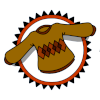Sports
/ArcaMax
Wild find the going tough against goalie from deep on the Ottawa bench
The Senators were down to their fourth-string goaltender, but the Wild made Ottawa’s depleted crease a nonissue.
Still missing Kirill Kaprizov as he deals with a lingering injury, the Wild stalled 3-1 against the Senators on Sunday at Xcel Energy Center for their fifth loss over the past seven games.
Ottawa’s Josh Norris broke a 1-1 tie on...Read more
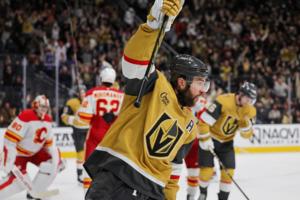
Knights shut out Flames to extend winning streak to 6
Goaltender Ilya Samsonov made 31 saves for his first shutout of the season and the Golden Knights beat the Calgary Flames 3-0 at T-Mobile Arena on Sunday.
The win extended the Knights’ winning streak to six games.
Left wing Brett Howden scored his 15th goal in the second period. Right wing Victor Olofsson added a power-play goal in the third...Read more
Sparked again by Michael Bunting, Penguins win Sunday's rematch against the Islanders
PITTSBURGH -- After an uncharacteristically quiet start to the season for a premier pest with a little scoring touch, Michael Bunting is back to making his presence felt on most nights.
He did it on the score sheet in Sunday’s 3-2 win over the New York Islanders at PPG Paints Arena, helping the Penguins split a weekend back-to-back against ...Read more
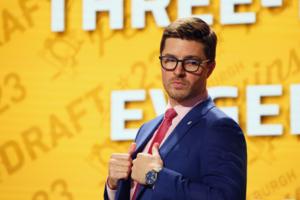
Jason Mackey: Kyle Dubas can't afford to let Penguins' recent run change the big picture
What the Penguins have done since Thanksgiving Eve has been admirable. When everyone thought they were circling the drain, they won nine of 13 entering the NHL's Christmas break, flirting with a possible playoff spot.
Their power play, which last year was a significant drag, was clicking at 30.8% during that time, their penalty kill at 90.6%. ...Read more
First-period explosion carries Red Wings to first victory under Todd McLellan
DETROIT — That new-coach bump that teams get, the Red Wings definitely got one game later.
The Wings rolled to a 4-2 victory Sunday over Washington, 48 hours after losing coach Todd McLellan's debut against Toronto.
All those areas the Wings wanted and needed to get better, for one game, they looked like an improved team while earning ...Read more
Special teams doom Blues in 4-2 loss to Sabres
ST. LOUIS — A third consecutive win remains elusive for the Blues.
During a 4-2 loss to the Sabres on Sunday afternoon, the Blues squandered another chance to string together three straight wins as they are now 0-5-1 in such games. Jason Zucker scored the game-winning goal for Buffalo with 9:30 left in the third period.
Zucker's one-timer ...Read more
Defenseman Cam Fowler 'grateful' for easy transition to Blues after trade
It’s been two weeks since Cam Fowler had to make one of the biggest decisions of his career: accept a trade to St. Louis or remain in Anaheim as a member of the Ducks.
Fowler could only be traded to four teams without his permission, but waived his no-trade clause to become a Blue, as St. Louis received Fowler and a 2027 fourth-round draft ...Read more
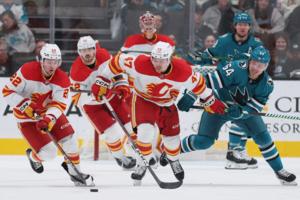
Sharks fall to Flames for seventh straight loss despite Macklin Celebrini's game-tying one-timer
SAN JOSE, Calif. — The San Jose Sharks’ losing streak has reached seven games.
In front of a sellout crowd of 17,435 spectators, San Jose couldn’t match score for score with Calgary, the fifth-best team in the NHL’s Pacific Division.
Instead, the Sharks managed just one goal on 22 shots, squandering a strong performance from goaltender...Read more
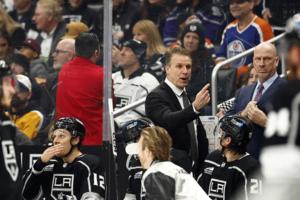
Kevin Baxter: Is this the season the Kings avenge years of playoff agony against Oilers?
LOS ANGELES — The Kings have seen each of the last three seasons end in first-round playoff losses to the Edmonton Oilers. And if the current NHL season had ended Saturday, guess who the Kings would face in the first round of the playoffs?
That made Saturday's matinee at Crypto.com Arena, the first meeting of the season between the teams, an ...Read more
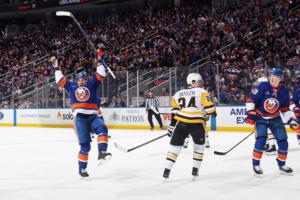
Second-period lull hurts Penguins, as they return from Christmas break with loss to Islanders
More consistent and thorough efforts had allowed the Penguins to bank important points before the NHL’s Christmas break. Coming out of the annual respite, however, a second-period lull on Saturday cost them.
The Penguins allowed three goals in four minutes to the New York Islanders at UBS Arena and could not recover, suffering a 6-3 loss in ...Read more
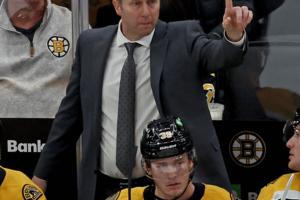
Bruins get measure of revenge, blank Blue Jackets, 4-0
BOSTON — The Bruins were given the rare gift of an immediate do-over and they made the most of it on Saturday night at TD Garden.
After the Blue Jackets romped over the Bruins in Columbus on Friday, the B’s walloped the Jackets, 4-0. It wasn’t the cleanest performance, but when they turned over the puck, the B’s did their best to shut ...Read more
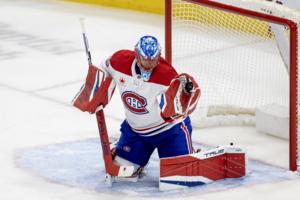
Panthers' Tkachuk on knee-on-knee hit from Kucherov: 'Lucky it wasn't worse than what it was'
SUNRISE, Fla. — Matthew Tkachuk’s Christmas involved plenty of rest and relaxation.
“A lot of time in the pool,” Tkachuk said. “A lot of ice.”
The Florida Panthers’ star winger needed it after enduring a dangerous knee-on-knee hit by Nikita Kucherov in the first period of Florida’s 4-0 loss to the Tampa Bay Lightning on Monday ...Read more
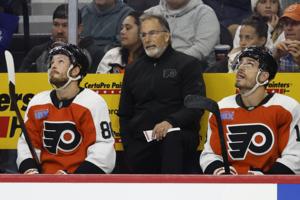
Noah Cates scores in fifth consecutive game as Flyers top Ducks, 3-1
ANAHEIM, Calif. — There’s something about games out of NHL-mandated breaks that get the Flyers going.
Last season, they beat the Vancouver Canucks out of the holiday break and the Florida Panthers after the combined bye week and All-Star Weekend. This season, after spending a few days resting and resetting, they came out of the holiday ...Read more
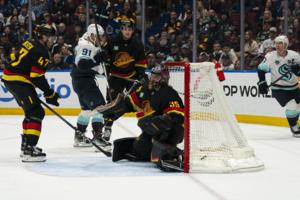
Kraken pull off stunning rally to top Canucks, 5-4 in overtime
VANCOUVER, B.C. — Rivalries in sports are built on a foundation of contempt.
Proximity helps, as does frequency. But ultimately creating the kind of passionate conflicts that start with players and coaches and trickle down through a fan base starts with playing meaningful games with something on the line.
Someday, that’ll happen for the ...Read more
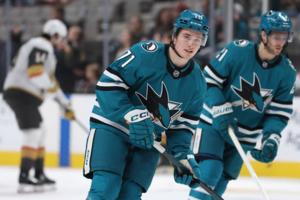
San Jose Sharks find new way to blow third period lead
SAN JOSE, Calif. – The San Jose Sharks found a new way to lose a third-period lead Friday.
Up by a goal with less than 19 minutes left in regulation time, the Sharks allowed shorthanded goals to defenseman Brayden McNabb and center Jack Eichel in 23 seconds in what became a 6-3 loss to the Vegas Golden Knights at SAP Center.
The Sharks also ...Read more
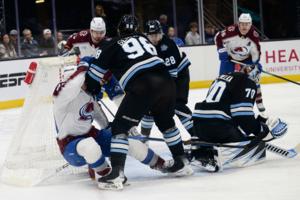
Artturi Lehkonen scores hat trick as Avalanche beats Utah in growing regional rivalry
SALT LAKE CITY — Geography says there’s potential for a rivalry to develop between the Colorado Avalanche and Utah HC. It’s still on the players and teams, not map locations, to build a proper one.
The Avs and their new Rocky Mountain neighbors got closer to making potential a reality Friday night. Artturi Lehkonen scored his first career...Read more
Blues ride first-period surge to 7-4 win over Predators
ST. LOUIS — The Blues must have found some goals hiding underneath their Christmas tree.
During a 7-4 win over Nashville on Friday night, the Blues continued an offensive breakthrough that began in their last game before the Christmas break, on Monday in Detroit. Six Blues players scored goals as the team set a season-high with seven goals.
...Read more
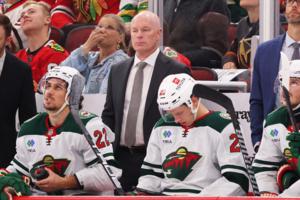
The Wild, in Dallas without Kirill Kaprizov, come suddenly to life and earn 3-2 victory in OT
DALLAS — The Wild finally defeated the Stars and without their best player.
Kirill Kaprizov was sidelined Friday with a lower-body injury, but the Wild rallied for a 3-2 victory in overtime in his absence at American Airlines Center to end a four-game skid to their Central Division rivals that was a seven-game rut when factoring in their ...Read more
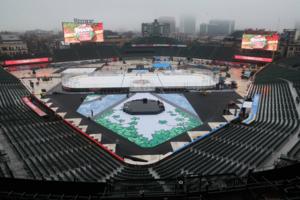
NHL Winter Classic will use Wrigley Field rooftops and other Cubs traditions for the New Year's Eve game
CHICAGO — As a chilly mist hovered over Wrigley Field on Friday afternoon, construction workers moved boxes across a large graphic of ivy where the third-base line normally would be.
Four days before a Tuesday afternoon puck drop for the NHL Winter Classic, the conversion from baseball ballpark to hockey rink is taking shape for the outdoor ...Read more
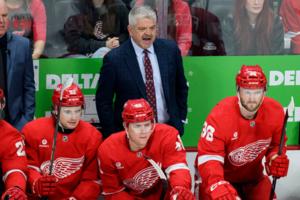
Maple Leafs spoil coach Todd McLellan's debut with 5-2 win over Red Wings
DETROIT — That bump, or spark, that many teams get after hiring a new coach mid-season, well, the Red Wings didn't get one.
The Wings pretty much Friday looked like the team that has disappointed much this season, losing 5-2 to the Toronto Maple Leafs.
Friday's debut of new head coach Todd McLellan, who replaced Derek Lalonde the day before,...Read more
Popular Stories
- Jason Mackey: Kyle Dubas can't afford to let Penguins' recent run change the big picture
- Sparked again by Michael Bunting, Penguins win Sunday's rematch against the Islanders
- Defenseman Cam Fowler 'grateful' for easy transition to Blues after trade
- First-period explosion carries Red Wings to first victory under Todd McLellan
- Special teams doom Blues in 4-2 loss to Sabres




